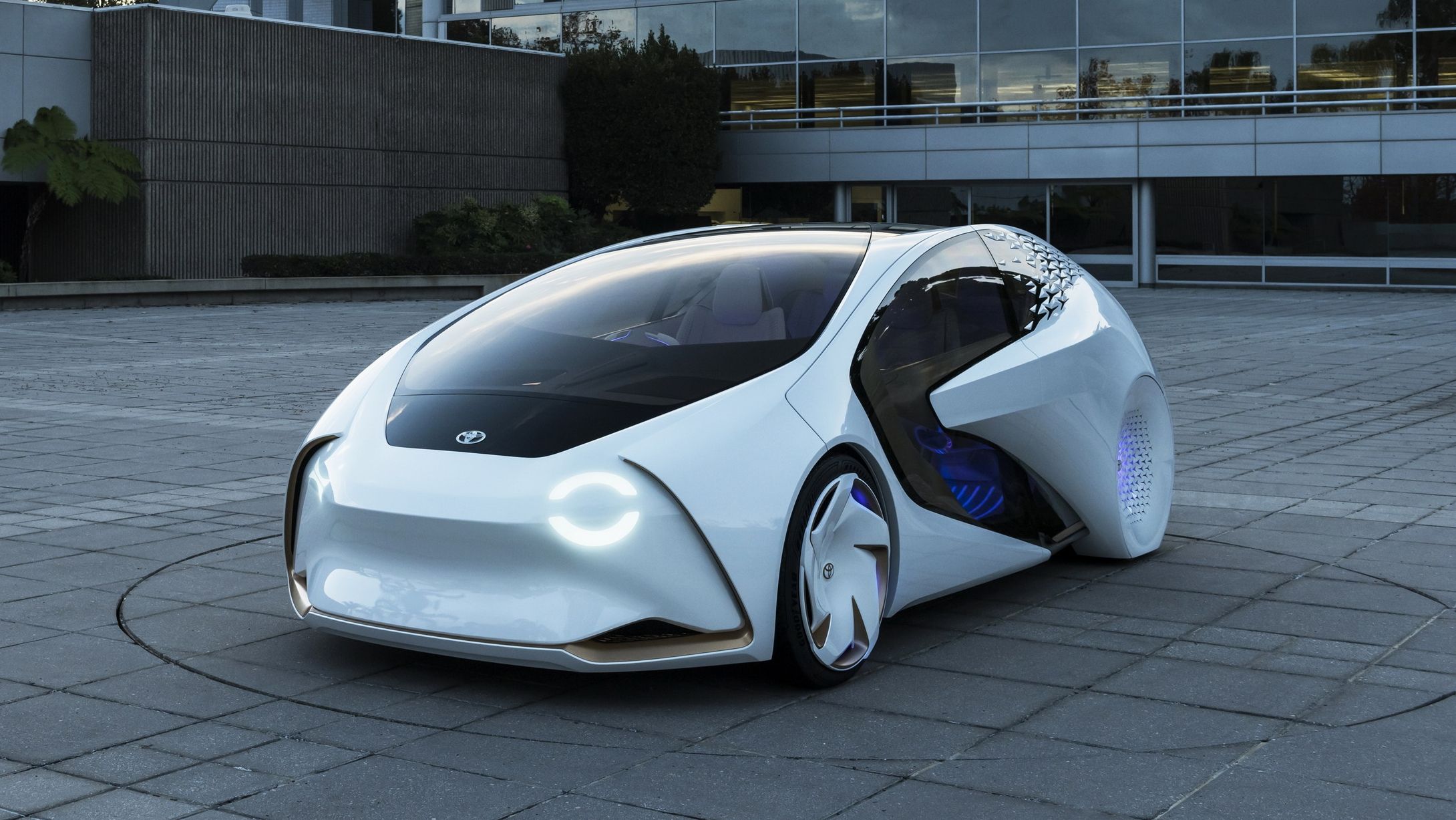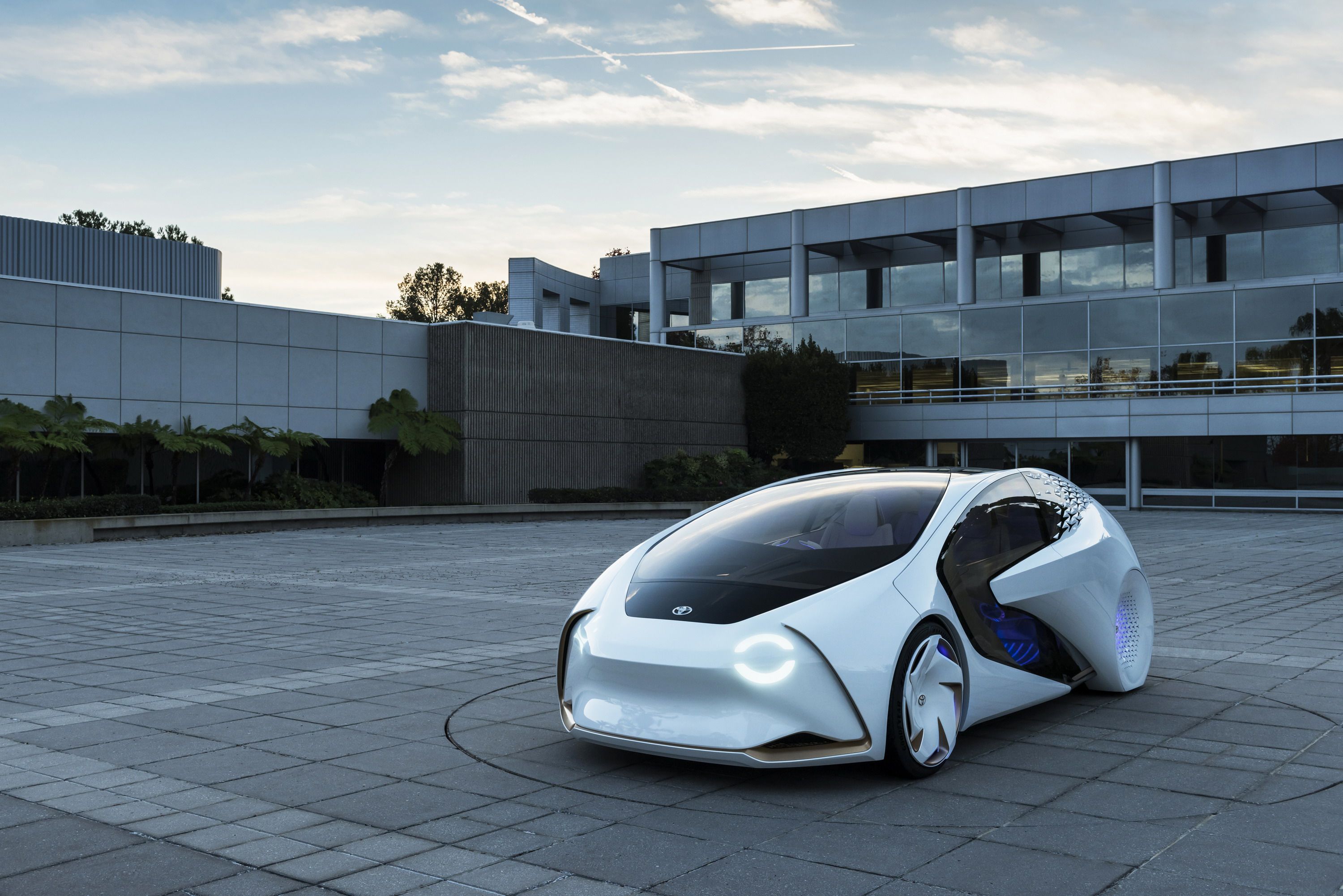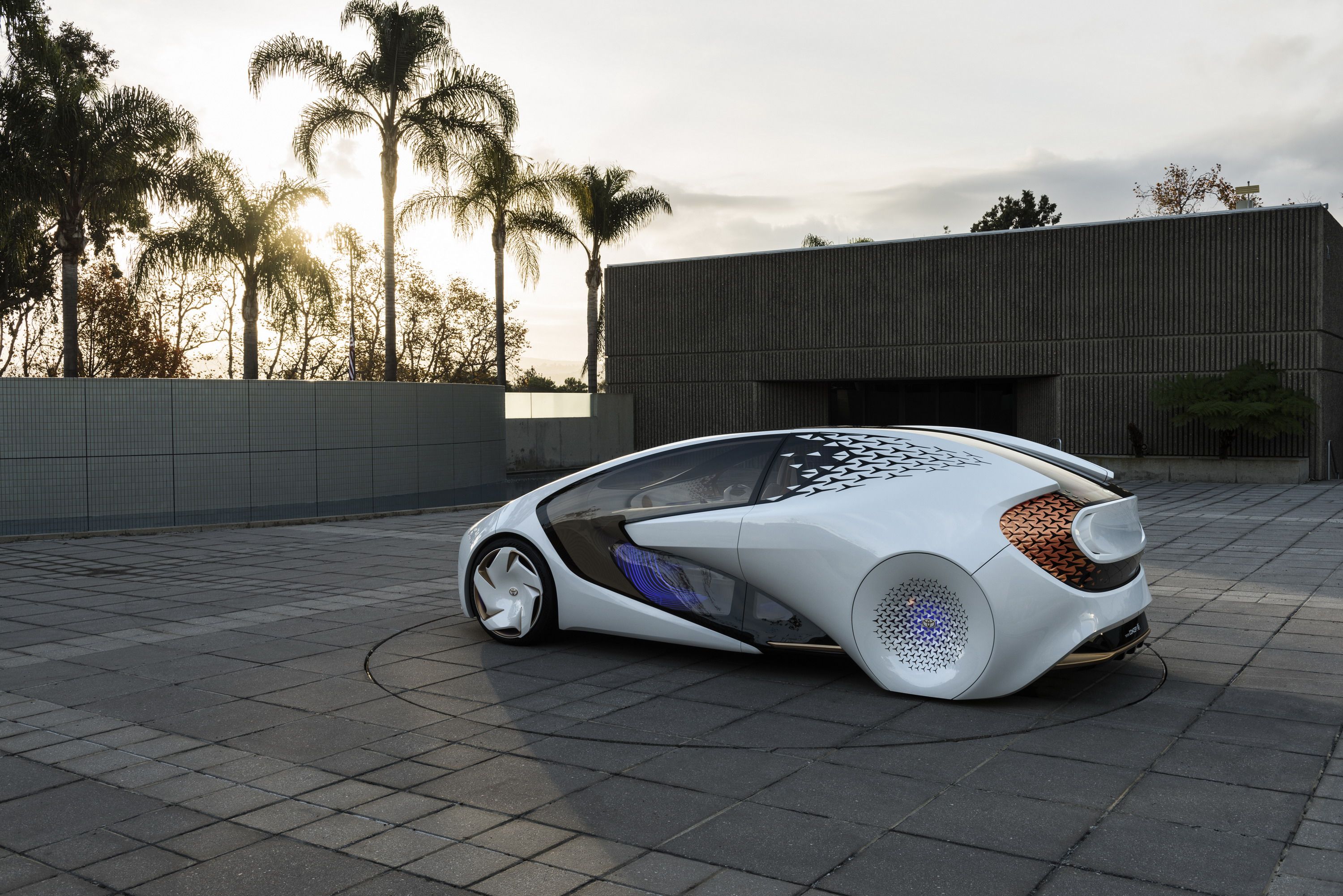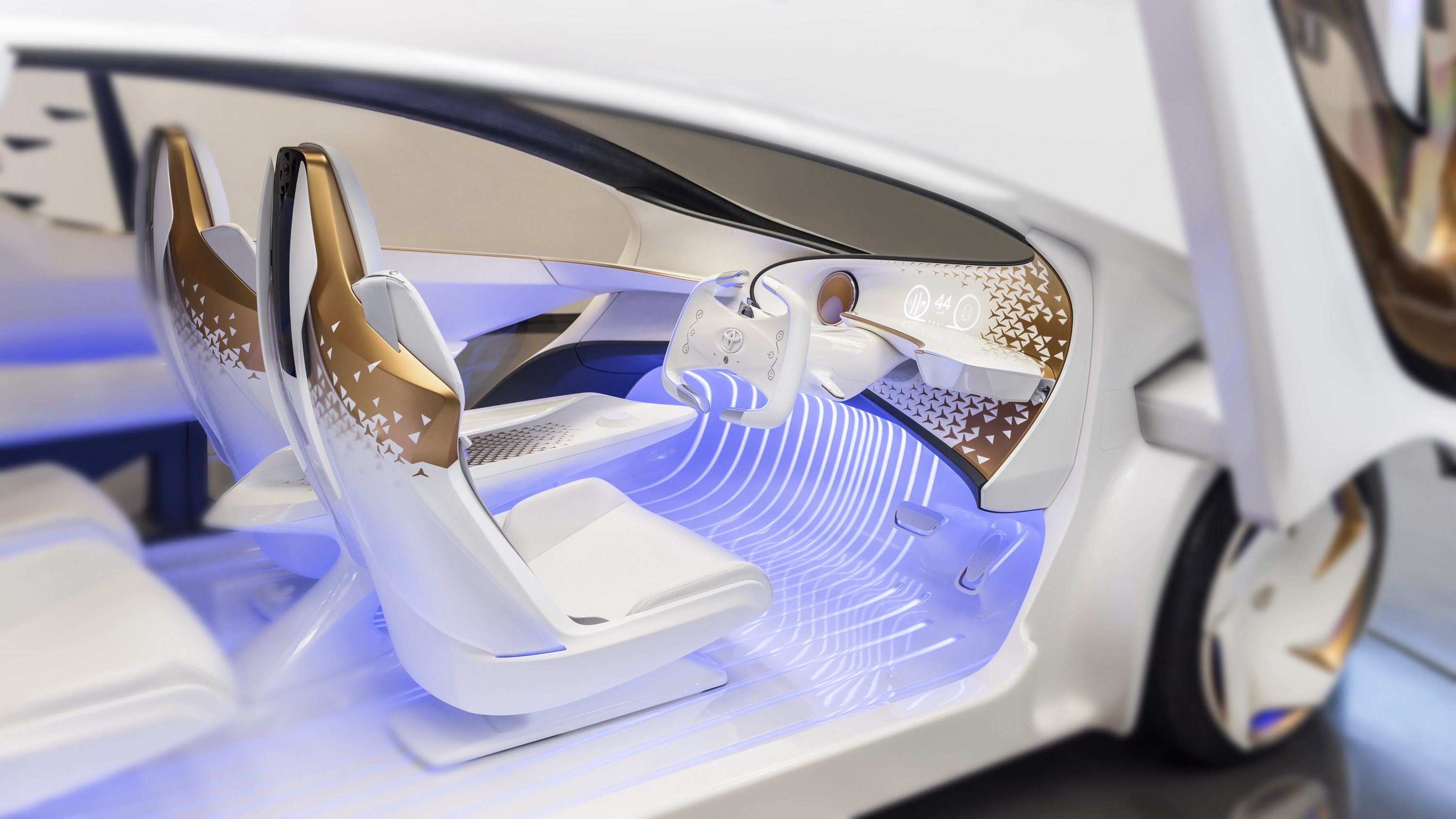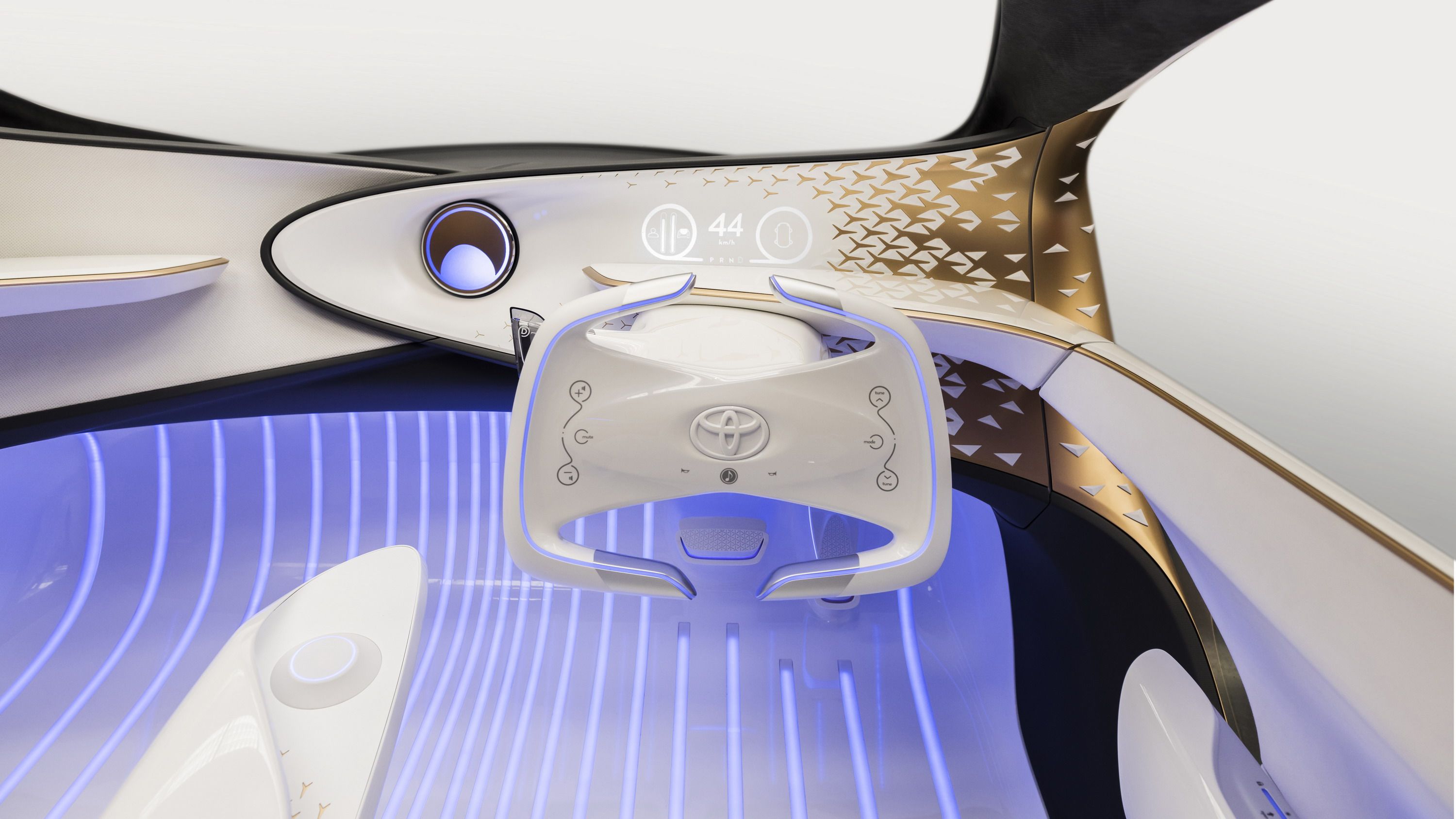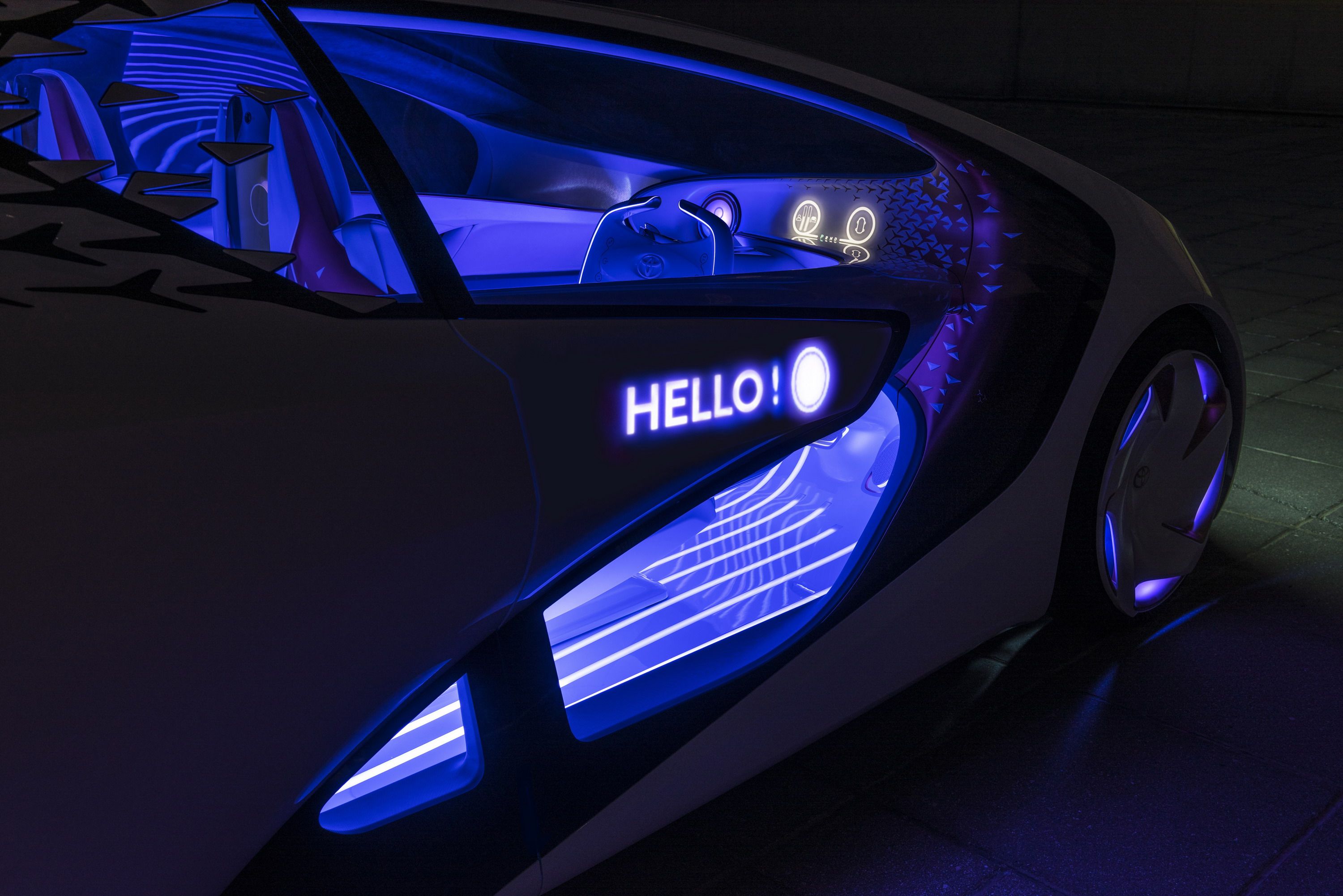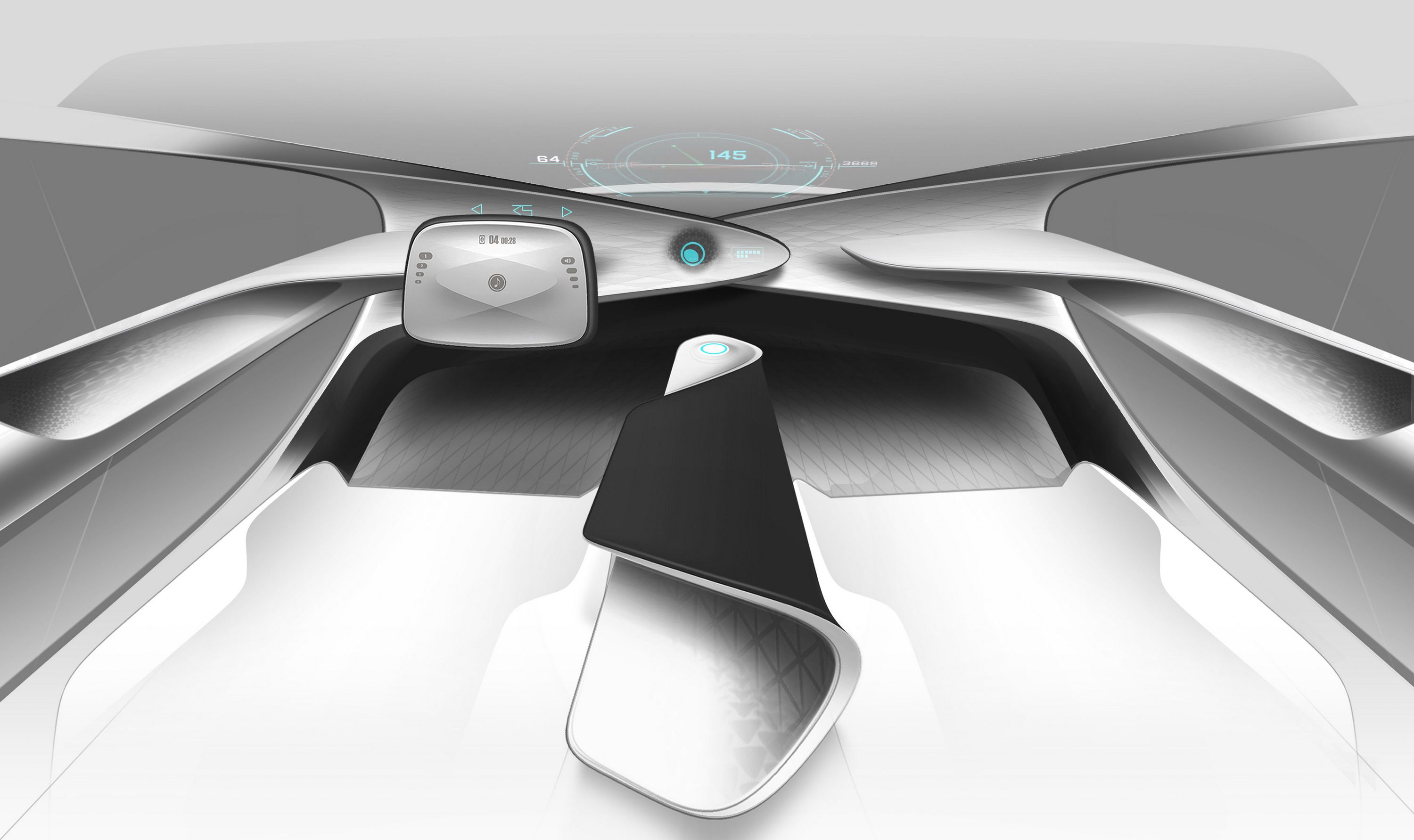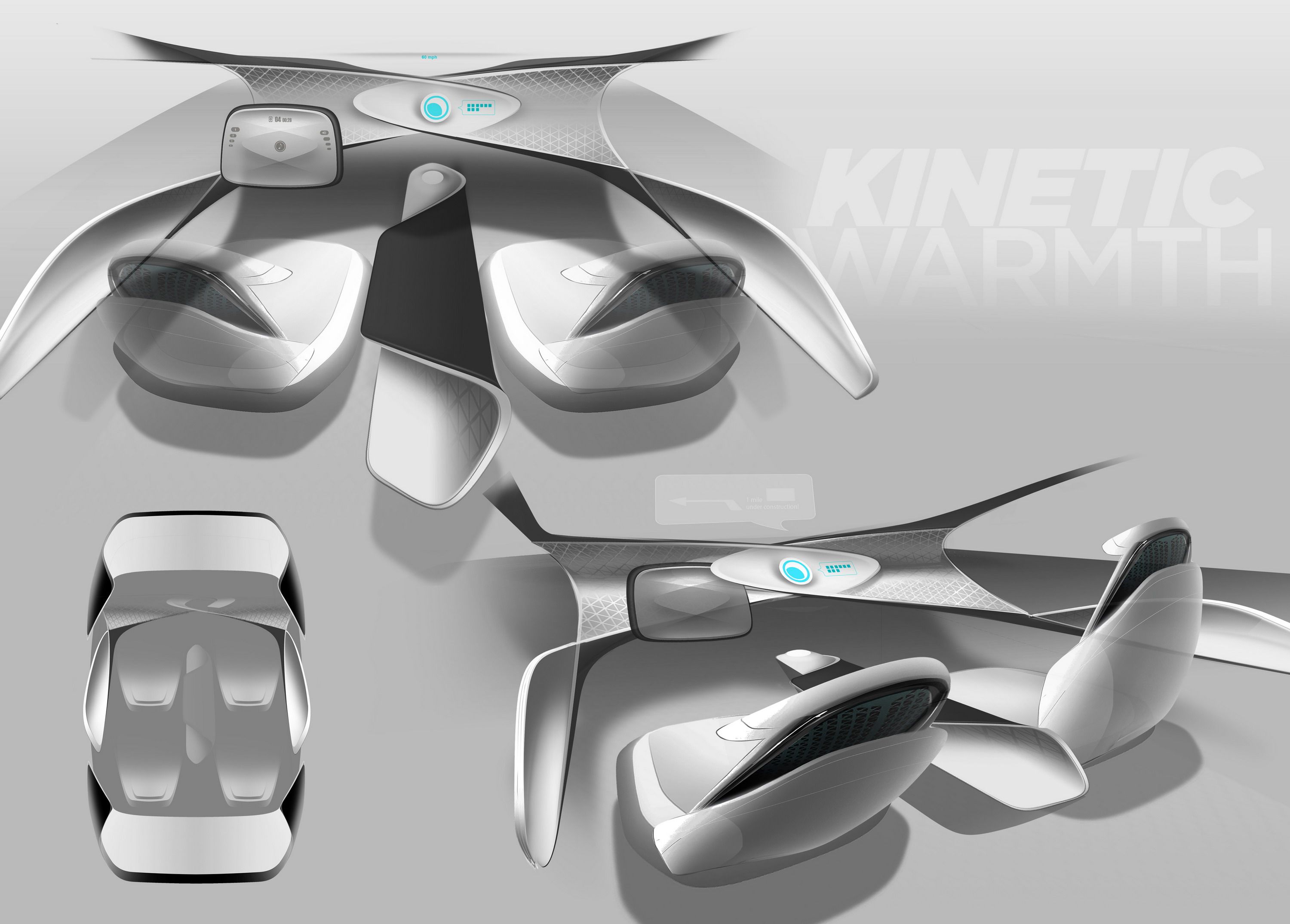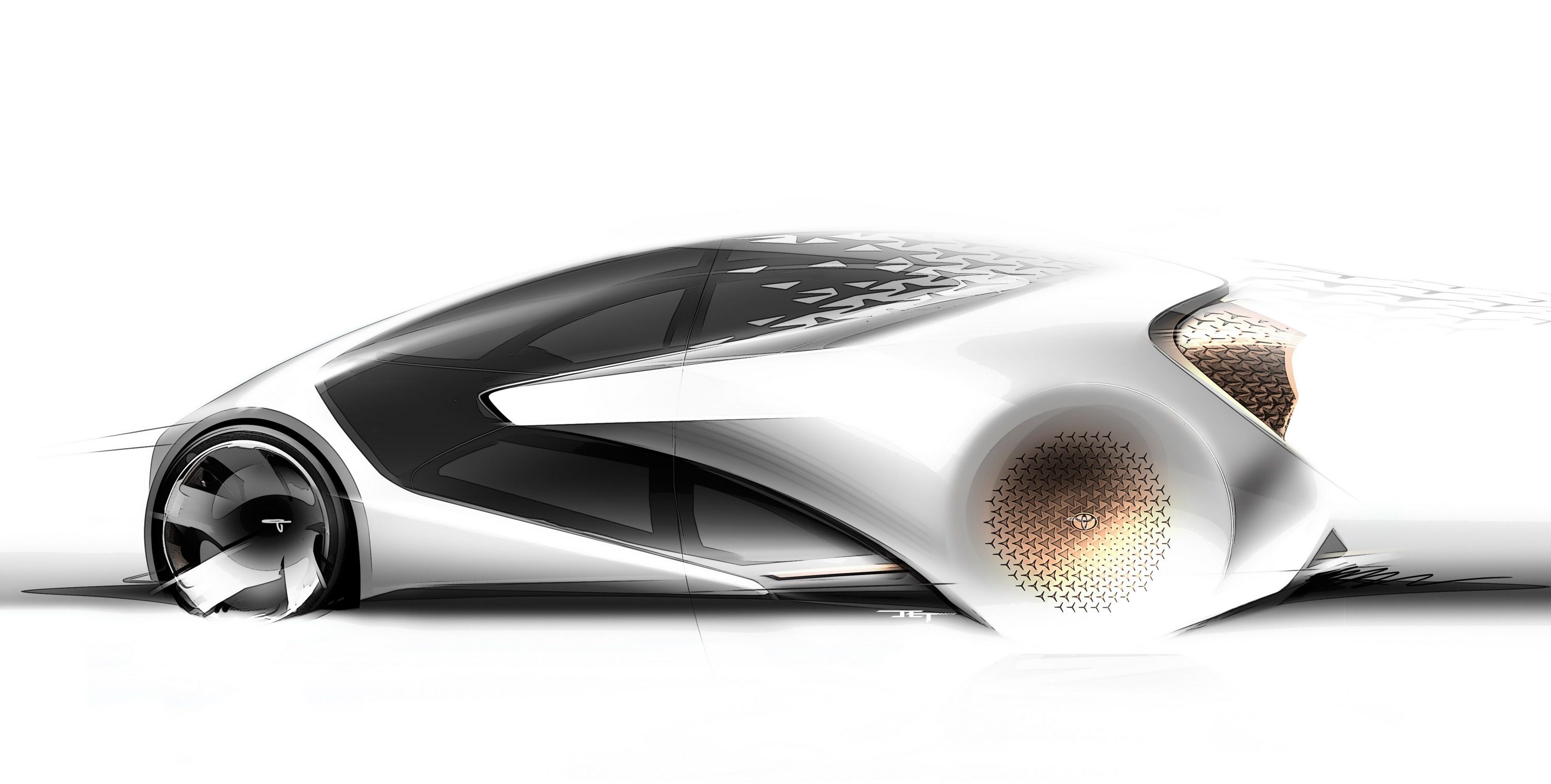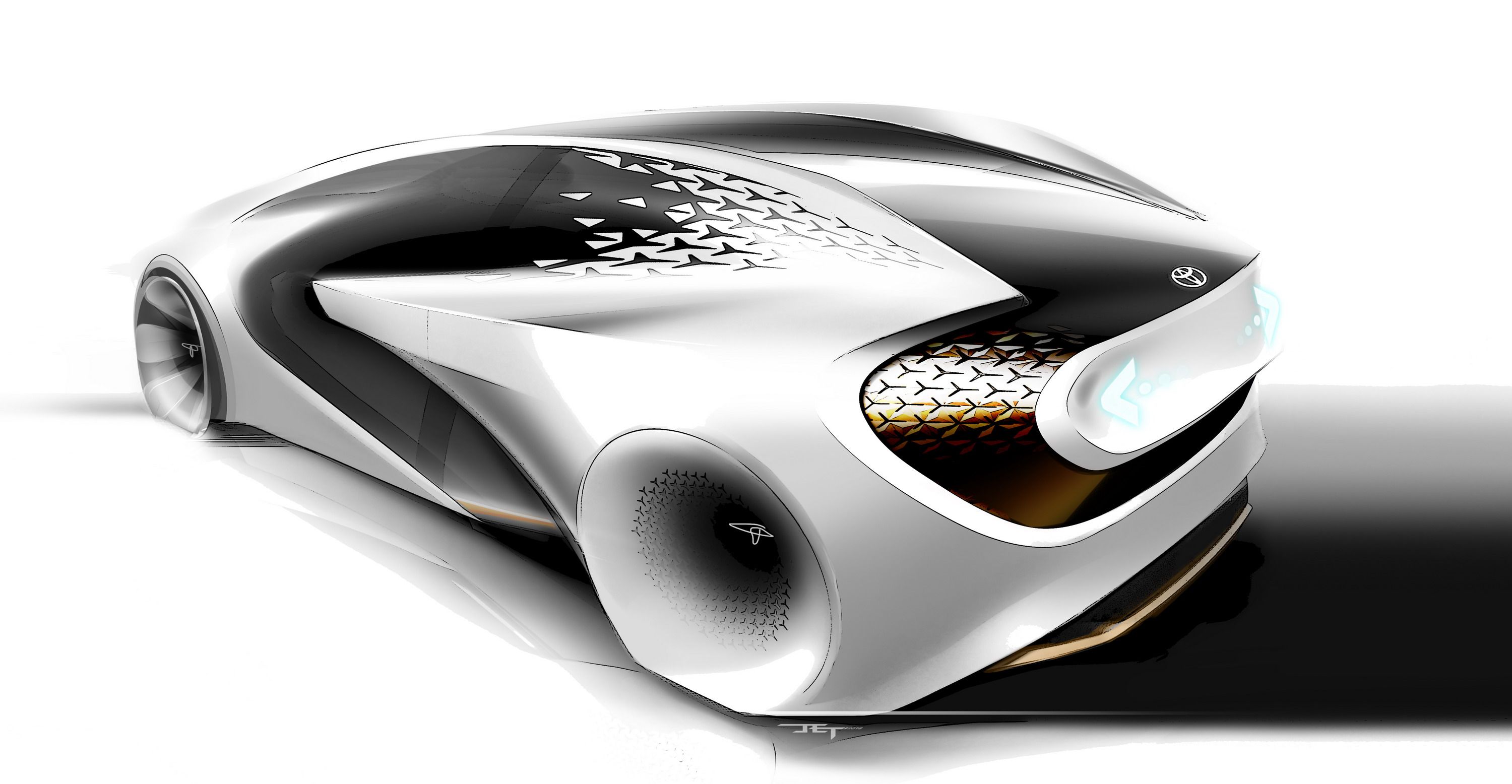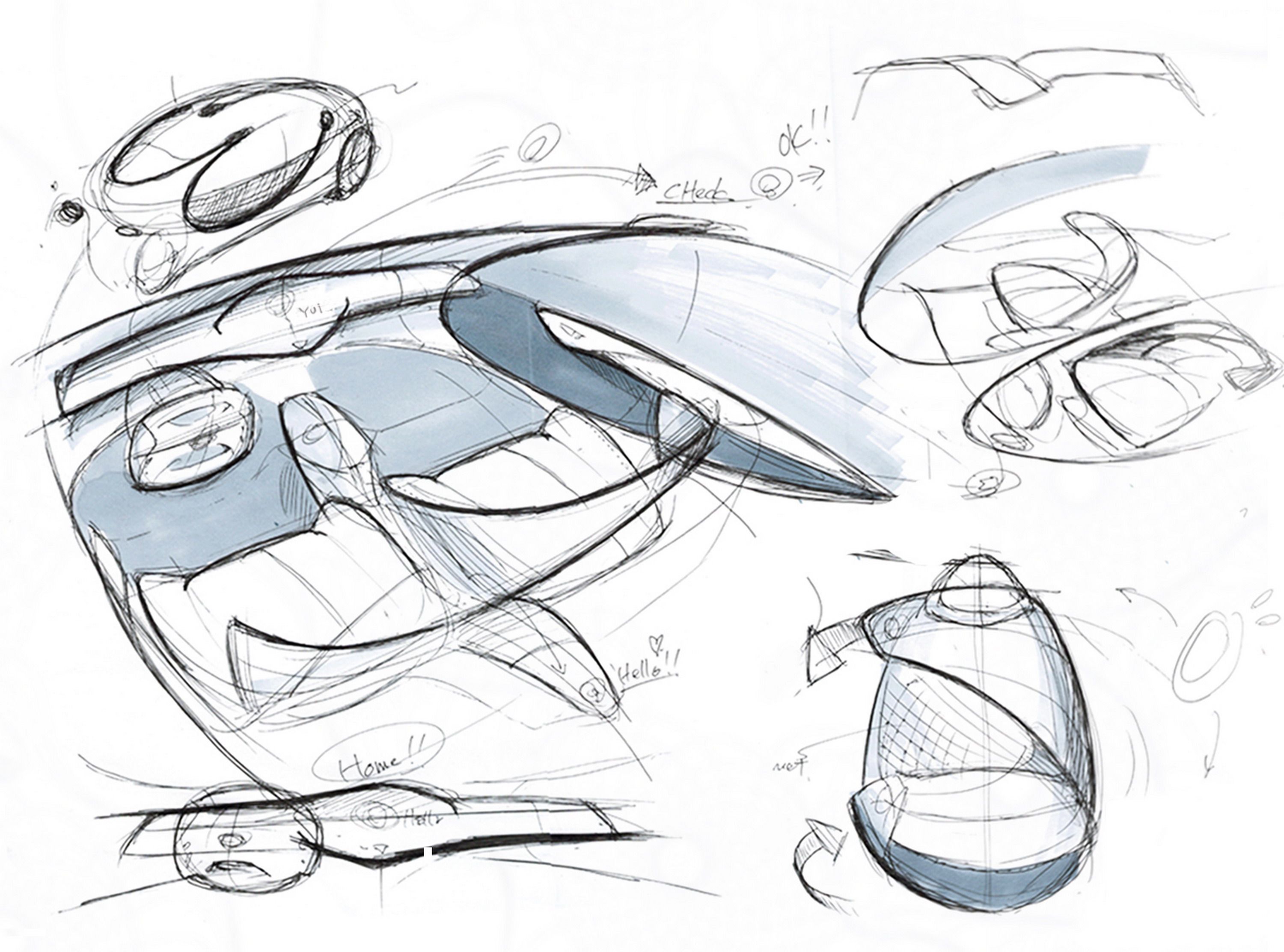The Consumer Electronics Show is technically not an auto show, but with the marriage between technology and the auto industry evolving faster than ever, it might as well be. A handful of car brands, established or otherwise, flocked to Las Vegas to show off their latest technological wares with one in particular, bringing an actual AI-infused concept car to the event. That company is Toyota and it brought the Concept-i, an admittedly intriguing concept vehicle that leverages the burgeoning influence of artificial intelligence on the industry. In other words, it’s a vehicle that literally interacts with other vehicles and its passengers on its own. Who knew, right?
Make no mistake though; the Concept-i isn’t going to head into production anytime soon, maybe even ever. But that’s not important in the grand scheme of things, nor is it indicative of something that Toyota can actually build in the coming years. The Concept-i is, above all else, a look into the possibilities of what the auto industry can evolve into in the future, provided of course that charting that course ends up being possible.
Give Toyota this much credit too: it’s not afraid to go out on a limb to get people excited about the future. Applying artificial intelligence in today’s cars is way beyond anybody’s capabilities, but who’s to say that it can’t happen in the future? There was once a point in time when self-driving cars were thought to be the stuff of Jetsonian lore, but look where it is now.
Ultimately, the Concept-i is nothing more than a showcase for the future of a business that could one day rely on artificial intelligence as the backbone of its products. It’s anybody’s guess how far along that future is, but in the event it does come, it’s good to see a company like Toyota already having some kind of blueprint on how to put those puzzle pieces together should the future of the industry ends up taking that route.
Continue reading to read more about the Toyota i-Concept.
2017 Toyota Concept-i
- Make: Array
- Model: 2017 Toyota Concept-i
- [do not use] Vehicle Model: Array
Exterior
Toyota presented this vehicle as a concept and it sure as heck looks like one. It is shaped like a car with four wheels and four doors so at least it has those things going for it. But they’re also the only things that you can describe as traditional as far as its design is concerned. Everything else is typical concept car styling, from the smooth surface on the front end that makes use of kind of LED display and messaging unit that not only acts as headlights, but also communicates to those outside the car if it’s being driven manually by the driver or is running on autonomous driving technology.
That particular display theme is a common characteristic of the Concept-i’s body since the rear section of the car also has similar capabilities, only it communicates to the cars behind it if it’s about to make an upcoming turn or warn them about a potential hazard in front of the road.
Moving away from its billboard-like abilities, the Concept-i’s side profile is an exercise in concept design. The traditional makeup of a car – the side panels, body lines, and presence of actual doors – have been interpreted differently in the concept. For one, the panels are completely absent, replaced instead by floor-to-roof glass that’s broken up by an arrow-like panel that not only extends all the way to the rear section of the car, but also covers the rear wheels completely.
The Concept-i’s rear section actually has the most production-ready value since the components are about as defined as they can be. Make no mistake though, don’t expect this kind of design to make its way into any of Toyota’s upcoming models any time soon.
All told, the Concept-I is a concept vehicle through and through. it has an interesting design, for sure, but ultimately, it’s probably best for it to be tucked away somewhere until Toyota figures out a way to make real-world progress with all of the technological applications that the concept is promising.
Interior
From a physical standpoint, the interior of the Concept-I has a “what you see is what you get” feel to it. Beyond the fact that it comes with four, individual sports seats that’s separated by a long central tunnel, the cabin isn’t actually that inviting. The colored lights on the floor is a nice touch though, and according to Toyota, they change colors depending on whether the car is running on manual or automated driving.
By the obscenely high “concept” standards set by the car’s exterior, the cabin falls a little short, at least at first glance. But that changes quickly once you factor in artificial intelligence, or “Yui,” as Toyota describes it, into the equation. That’s the biggest selling point of the Concept-i and the it’s in the interior where the visual representation of Yui takes center stage. Apparently, the car’s dashboard is home to Yui and the configuration of the interior all play their roles in helping Yui communicate to the driver and the passengers through the use of light, sound, and, believe it or not, touch.
Communicating through light and sound is pretty easy to accomplish and it’s actually something that’s already being done to some capacity these days. But for an AI to communicate through actual touch? Now that’s next-level, Star Trek wizardry, something that the world has yet to see in mass capacity.
The features are admittedly hard to grasp relative to what automakers are actually capable of these days, but fortunately, Toyota didn’t just create a concept that bears absolutely no connection to the actual state of the industry today and what it could turn into a little ways down the road.
The Yui artificial intelligence system also has features that are aimed to create a safer and more sustainable autonomous driving experience for drivers and passengers alike. It even has two safety systems, aptly named “Chauffeur” and “Guardian,” that serve clear purposes. The “Chauffeur” system, for example, is being touted as autonomous driving system that can achieve full Level Five autonomy, essentially leaving all the driving responsibilities to Yui the AI system. The “Guardian” system, on the other hand, is actually just a super evolved version of the safety systems that are currently being used today, including lane departure warnings and active cruise control.
Drivetrain
For all of the artificial intelligence features that Toyota laid out on the Concept-i, it’s not surprising that any talk of drivetrain was largely left in the background. In fact, the Japanese automaker didn’t even mention the Concept-i's drivetrain other than saying that it’s going to be capable of running on Level Five autonomy. That likely leaves out any thought of the car having some kind of internal combustion engine.
Having said all of that, Toyota was equally coy about the kind of batteries the Concept-i runs on, which leads to a somewhat amusing conclusion. The car has no specific drivetrain and while that may sound ridiculous on the surface, the sheer fact that it’s a complete prototype of a car that likely won’t see the time of day in near or far future makes it less implausible to believe. Besides, past concepts have been presented with no engines or batteries. The Concept-i isn’t the first and certainly won’t be the last.
Conclusion
I have two trains of thought about the Toyota Concept-i. On the one hand, Toyota deserves to get credit for thinking this far down the road and presenting a concept that physically brings to life a lot of our automotive artificial intelligence fantasies. The whole concept of artificial intelligence was largely reserved for Hollywood movies, but with the rapid evolution in the development of electrification and autonomous driving technology (themselves a form of AI in their own capacities), the whole concept of artificial intelligence is becoming more and more real by the day. Toyota’s Concept-i is a physical representation of what a future could look like if artificial intelligence does evolve into what we always hoped it would.
On the other hand, nobody in their right mind should think of the Concept-I as a vehicle that’s ready to hit the roads anytime soon. That’s not going to happen today, tomorrow, or maybe even ever.
The features Toyota laid out for the concept, particularly the Yui artificial intelligence system, are simply ways for the company to show everyone what that future could look like, and just because the industry itself hasn’t evolved faster than most people expected it to, that doesn’t mean automakers like Toyota are giving up on this kind of automotive future.
Maybe it’s impossible to do it in today’s circumstances. But down the road? Who knows.

